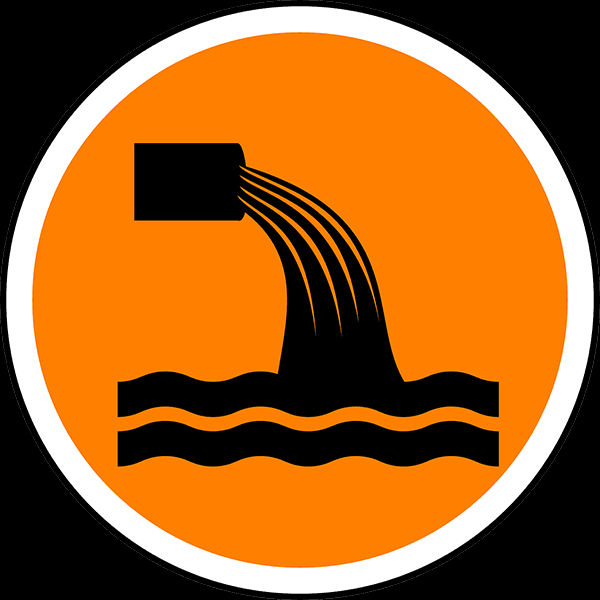The Only Guide for Reclaim Waste
The Only Guide for Reclaim Waste
Blog Article
The Greatest Guide To Reclaim Waste
Table of ContentsThe Greatest Guide To Reclaim WasteSome Of Reclaim WasteThe Buzz on Reclaim WasteReclaim Waste Things To Know Before You BuyThe Ultimate Guide To Reclaim Waste
Explore the types, events, and kinds of fluid waste. Domestic sewer waste refers to the waste and products from a residential sewage-disposal tank. This kind of waste is created by humans in homes, institutions, and various other buildings. This only consists of septic systems that have a drainpipe area. The correct administration and disposal of domestic sewer waste need fluid waste to be transferred to a sewage therapy plant where the appropriate methods and devices are applied to purify and throw away waste.
Business waste typically includes prospective hazards, such as flammable products or a blend of fluid and solid waste products, and calls for an advanced and thorough disposal process. The disposal of commercial waste typically entails the purification of waste prior to transport to make certain safe and correct disposal. Hazardous waste is developed from results and drainage of industrial processes and production.
This sort of waste can not utilize the same sewage administration transportation or procedures as septic or business liquids. The commercial waste administration process needs the inspection and screening of liquid waste before it goes through the disposal procedure (liquid waste disposal). Overflow waste is the fluid waste that originates from runoff and excess stormwater in very populated locations or cities
Runoff waste can cause contamination and flooding if not dealt with effectively. Making certain appropriate waste monitoring can protect against calamities and minimize environmental injury.
Reclaim Waste - The Facts
Get in touch with PROS Solutions today to find out about our waste monitoring and disposal services and the appropriate means to care for the liquid waste you create.
(https://reclaimwaste.godaddysites.com/f/efficient-liquid-waste-disposal-removal-melbourne)This so-called 'wastewater' is not just a vital source yet, after treatment, will certainly be released to our land, waterways or the sea. Used water from commodes, showers, bathrooms, cooking area sinks, washings and commercial procedures is understood as wastewater.

water made use of to cool down equipment or tidy plant and devices). Stormwater, a kind of wastewater, is drainage that flows from agricultural and metropolitan locations such as roofings, parks, yards, roadways, paths and rain gutters right into stormwater drains, after rainfall. Stormwater moves untreated straight to local creeks or rivers, at some point reaching the sea.
Our Reclaim Waste Statements
In Queensland, the majority of wastewater is dealt with at sewer treatment plants. Wastewater is transferred from domestic or industrial websites with a system of drains and pump stations, known as sewage reticulation, to a sewage therapy plant.
The Division of Natural Resources encourages regional federal governments regarding managing, operating and maintaining sewage systems and treatment plants. In unsewered areas, city governments might call for homeowners to set up specific or house sewage treatment systems to treat residential wastewater from commodes, cooking areas, these details restrooms and laundries. The Department of Natural Resources authorizes the use of household systems when they are confirmed to be reliable.
The majority of stormwater receives no therapy. In some brand-new communities, therapy of some stormwater to eliminate trash, sand and gravel has begun using gross pollutant catches. Wastewater therapy takes place in four stages: Gets rid of strong matter. Larger solids, such as plastics and other things incorrectly released to sewers, are gotten rid of when wastewater is gone through displays.
Wastewater after that flows right into big tanks where solids work out and are removed as sludge. Grease and residue are skimmed from the surface area. Makes use of little living organisms called micro-organisms to break down and eliminate continuing to be liquified wastes and great fragments. Micro-organisms and wastes are included in the sludge. Eliminates nitrogen and phosphorus nutrients that could create algal blooms in our rivers and threaten marine life.
See This Report on Reclaim Waste
Nutrient elimination is not offered at all sewage treatment plants due to the fact that it calls for costly specialist tools. It is coming to be more common in Queensland. Clear fluid effluent produced after therapy might still include disease-causing micro-organisms. If this effluent is released into waterways such as rivers or the sea, the micro-organisms will eventually die out.

This typically indicates wastewater needs to be treated or impurities removed before it can be released to rivers. The majority of wastewater moves into the sewerage system. Under the Act, local governments carry out authorizations and licences for ecologically relevant tasks (Ages) involving wastewater launches that may have a regional impact. The division provides approvals and permits to ERAs involving wastewater launches that might have a local or statewide influence.
4 Simple Techniques For Reclaim Waste
Or else, samples are considered research laboratory evaluation. Often several tests are needed to develop the levels of each of the different toxins such as oils, hefty steels and pesticides in water. Tracking gives factual details about water top quality and can confirm that licence conditions are being fulfilled. The information gotten through tracking gives the basis for making water quality decisions.
Report this page